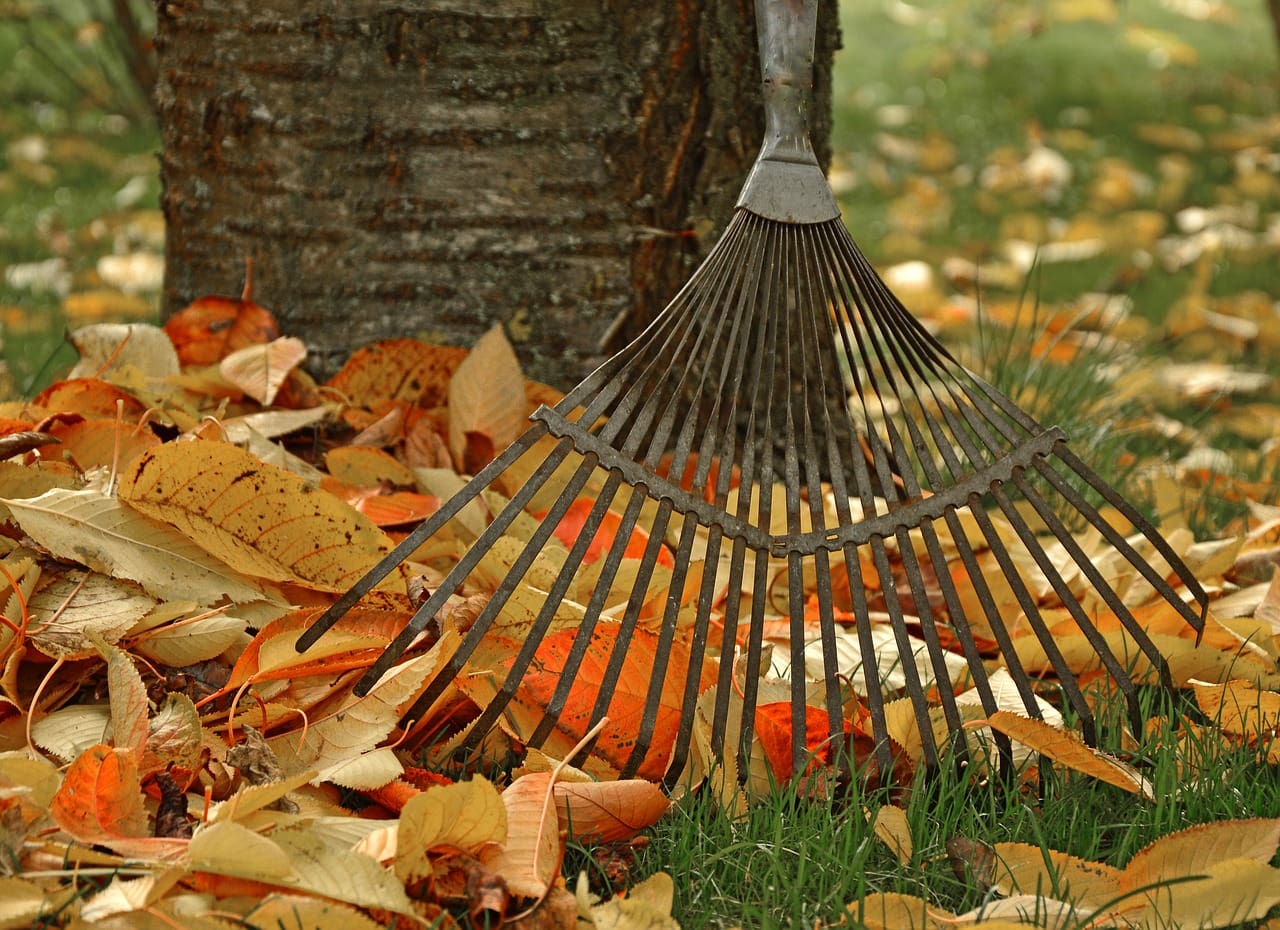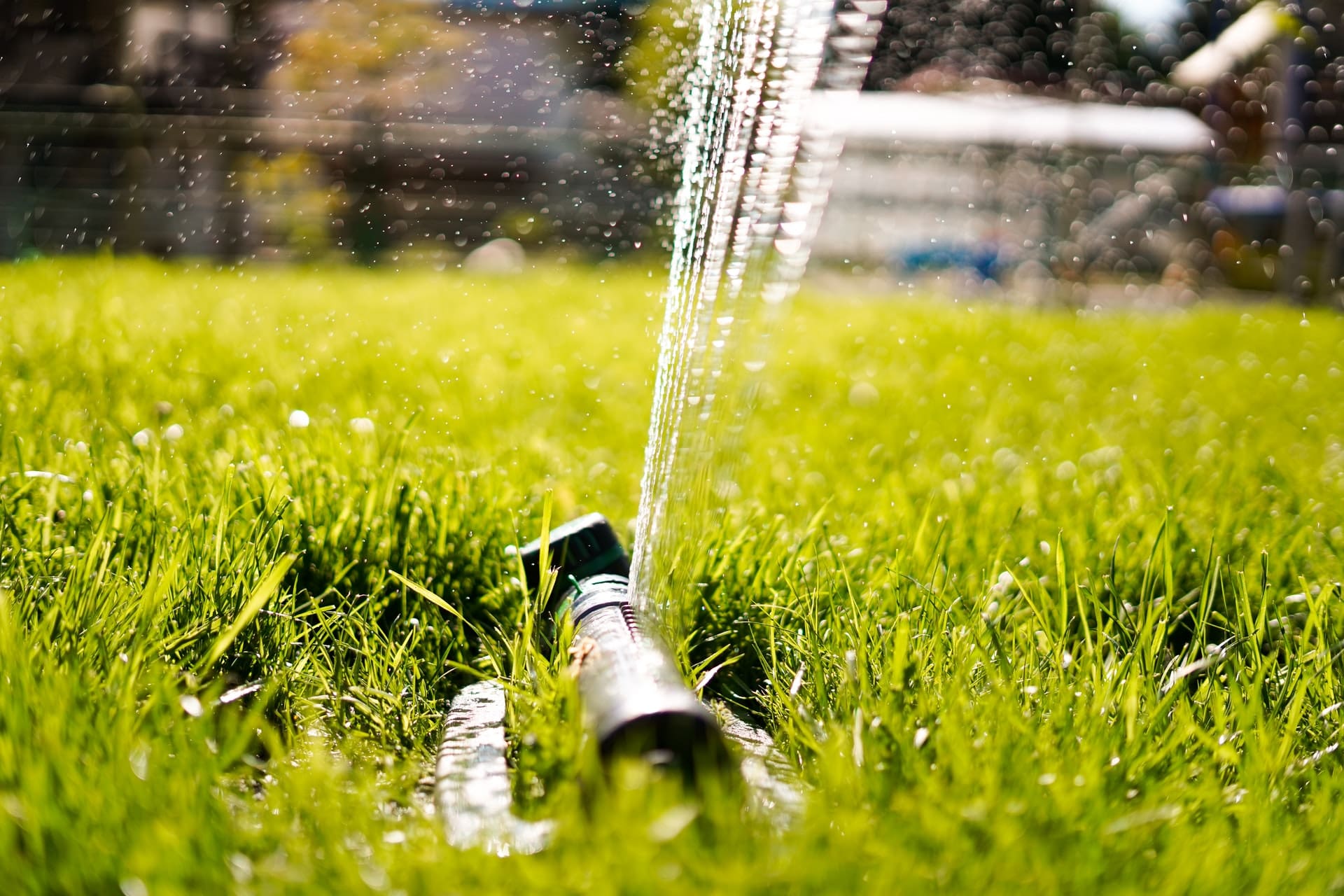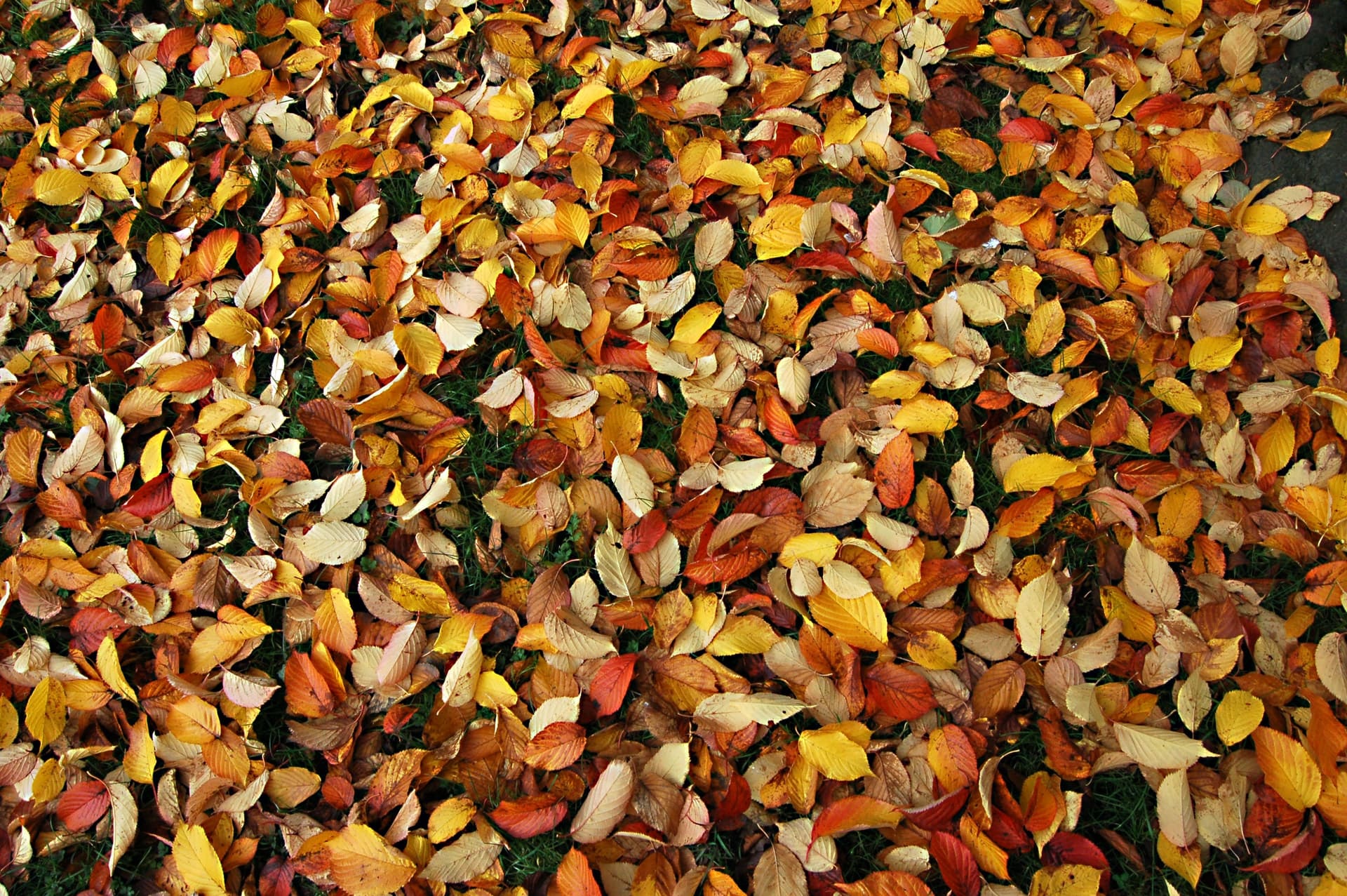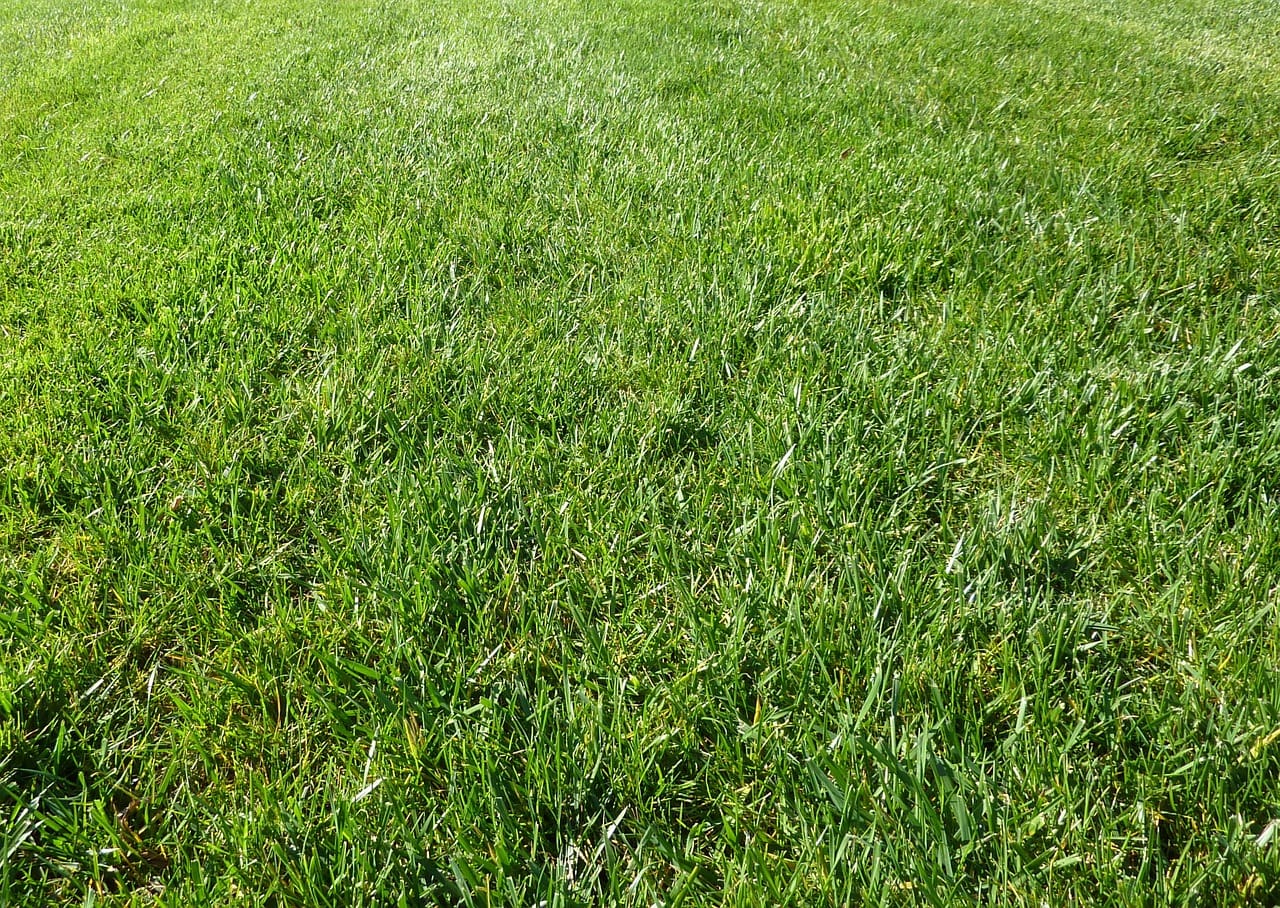
Lawn experts know beautiful lawns are made in the fall. That’s why it’s crucial to keep up with fall lawn maintenance well beyond summer months to ensure you have the most luscious green grass year after year.
What Yard Work Should be done in the Fall?
There are a few additional steps of fall lawn maintenance you can do to ensure your lawn is thick and green come spring.
- Continue Watering: While harsher heat may no longer be a threat to your grass, it’s important to make sure your yard is still properly watered. Make sure your grass gets at least an inch of rain per week. If you rely on an irrigation system it’s best to disconnect it at the end of October so it doesn’t freeze over.

- Aerate: To aerate your lawn means to loosen the soil to prevent thatch, a layer of roots that build up blocking important nutrients and proper grass growth. If you don’t own an aerator, you can rent one from a local nursery or supply store. Aim to do this between mid- September and mid-October well before the first frost.
- Seed: Seeding your lawn helps to fill in dry and damaged areas and can help thicken aging grass. Generally the denser your lawn, the more it is protected from weed growth. Fall is a great time to seed because the daytime weather isn’t as hot, the nights are cooler, and there is enough morning dew to allow seeds to properly germinate.
- Fertilize: Fertilizing helps prepare your lawn to withstand the harsh colder months. It’s suggested that you choose a fertilizer that has optimal nitrogen to phosphorus to potassium ratio of 24-4-12 with isobutylene diarrhea (IBDU). This concentrate will make sure your lawn can achieve optimal blade growth and build up enough stamina to withstand cold weather. Use a walk-behind spreader to fertilize to ensure it’s distributed evenly for optimal grass growth.
How do I Overseed My Lawn in the Fall?
Overseeding your lawn can help fix patches or dry spots in your lawn and give it a head start to grow come spring. Additionally, it can help you grow thicker grass over your current lawn. One of the most important steps when overseeding your lawn is to make sure you have seed-to-soil contact. If the seed isn’t touching the soil you run the risk of it washing away or never taking off. For optimum results, seed on a calm day so that your seed distributes evenly, using a lawn spreader or drop broadcast spreader. For small areas or patches, use a hand weasel or if necessary just your hands to spread seed as evenly as possible.
In terms of timing for this fall lawn maintenance project, aim to seed September through mid-October, about a month before the first frost. If you accidentally let it go too long and frost does appear, just wait to seed until the soil thaws and give it a try.

When should I Fertilize My Lawn in the Fall?
It’s tempting to fertilize as an early fall lawn maintenance project, but it’s best to aerate first to let roots establish themselves and save fertilizing for later in fall in cooler weather. A good rule of thumb is to fertilize right before frost occurs (around the same time of your last mow). This is typically in mid-October.
How do I Prepare my Lawn for Winter?
Everyone knows, one of the most important steps of fall lawn maintenance is to remove leaves. While colorful autumn leaves may look pretty, they block light and trap moisture that can ultimately kill your grass underneath. Clumps of leaves left untouched can also turn into muddy piles that are anything but desirable.

Is it Better to Leave the Grass Long for Winter?
Continue mowing your grass for fall lawn maintenance. It’s best to keep your grass around 2 1/2 inches tall through winter. While it’s tempting to let the grass grow and let nature take its course after summer ends, it’s important to continue moving until the first frost happens. If your grass is left too long you run the risk of it becoming susceptible to fungi caused by snow. But if you cut your grass too short, it’s likely to suffer from damaged roots that can no longer survive the cold and dry winter climate.
How Late can you put Winterizer on Your Lawn?
Winterizer is the secret weapon of fall lawn maintenance that ensures your lawn has enough stored food to not only withstand the harsh winter but promotes growth in early spring. It’s best to use this winter-prep fertilizer when the grass stops growing in the fall, around mid-November into early December.
Contact Borst Landscape and Design today for fall lawn maintenance tips like these!

